In the late 1760s, the ageing French King Louis XV made a magnanimous gift to his young courtesan lover Jeanne Becu, the Countess du Barry – the gift of a seven year old ‘African’ slave. The gift was a great hit with his lover – in the memoir attributed to her by the nineteenth century Baron Lamothe Langon, the Countess apparently regarded the young African boy as her third most treasured possession, after her dog Dorine, and serving lady Henriette “In honour of the tragedy of Alzire, I christened my little negro Zamor, to whom by degrees I became attached with all the tenderness of a mother.”

Painting: Anonymous
Though the difference between continents may well have been lost on the Countess du Barry, when ‘Zamor’ finally did speak in his own voice, after the French Revolution, he recorded that he was not from Africa at all but from India, born in the Chittagong province of Bengal. It also seems that whatever ‘maternal’ affections that may have been lavished upon him, it was not enough to prevent Zamor from revenging himself on his Mistress during the Revolution. In the days following the fall of the Bastille, Zamor would go on to enthusiastic supporter of the Jacobin party. This is his story, and the story of the Revolutions own relationship with France’s colonial and slave-owning legacy.
I
The erstwhile Bengal subah of the Mughal empire where Zamor was born comprises the modern Indian states of West Bengal and Bihar and the entirety of the country of Bangladesh. The famously wealthy province was conquered in 1757 by the British East India Company. Zamor was trafficked to France by British slave traders via the island of Madagascar. The child ended up being sold as an exotic curiosity to Louis XV, who in turn gifted it to the Countess. Lamothe-Langone records Du Barry’s account of how the child Zamor came into her service “This son of Africa was presented to me by the duc de Richelieu, clad in the picturesque costume of his native land; his head ornamented with feathers of every colour, a short petticoat of plaited grass around his waist, while the richest bracelets adorned his wrists, and chains of gold, pearls, and rubies, glittered over his neck and hung from his ears.”
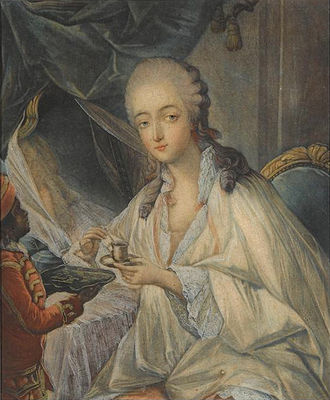
by Auguste de Creuse, 1771
One doesnt need to be an expert in traditional Indian clothing to know this bears no resemblance to any eighteenth century Bengali ‘costume’, picaresque or otherwise. Zamors origin was irrelevant – the gift was that of a ‘black page’, and any exotic looking child would do. Having a servant with dark skin was a status symbol in Europe, signalling the global reach of an aristocratic household. The affirmation of status from would have been all the more important for the Countess who owed her title and position in society entirely to being the last official royal mistress – Maîtresse-en-titre – to Louis XV.
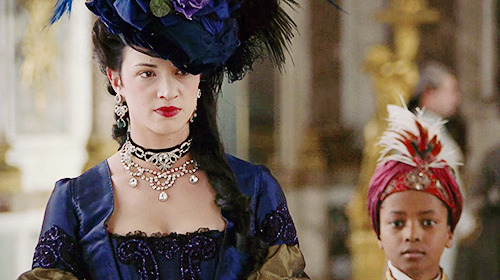
Marie Antoinette (2006), d Sofia Copolla, Sony Pictures, Pathe Distribution, Toho-Tawa
Whatever the case, Zamor quickly became a favourite accessory to the Countess du Barry, seen everywhere with her,as his primary duty was to ‘carry her robe’ wherever she went. He has continued to accompany her in all of DuBarry’s various portrayals in film and literature – making an appearance as an unnamed page even in Sofia Coppolla’s strangely royalist 2006 Marie Antoinette film.
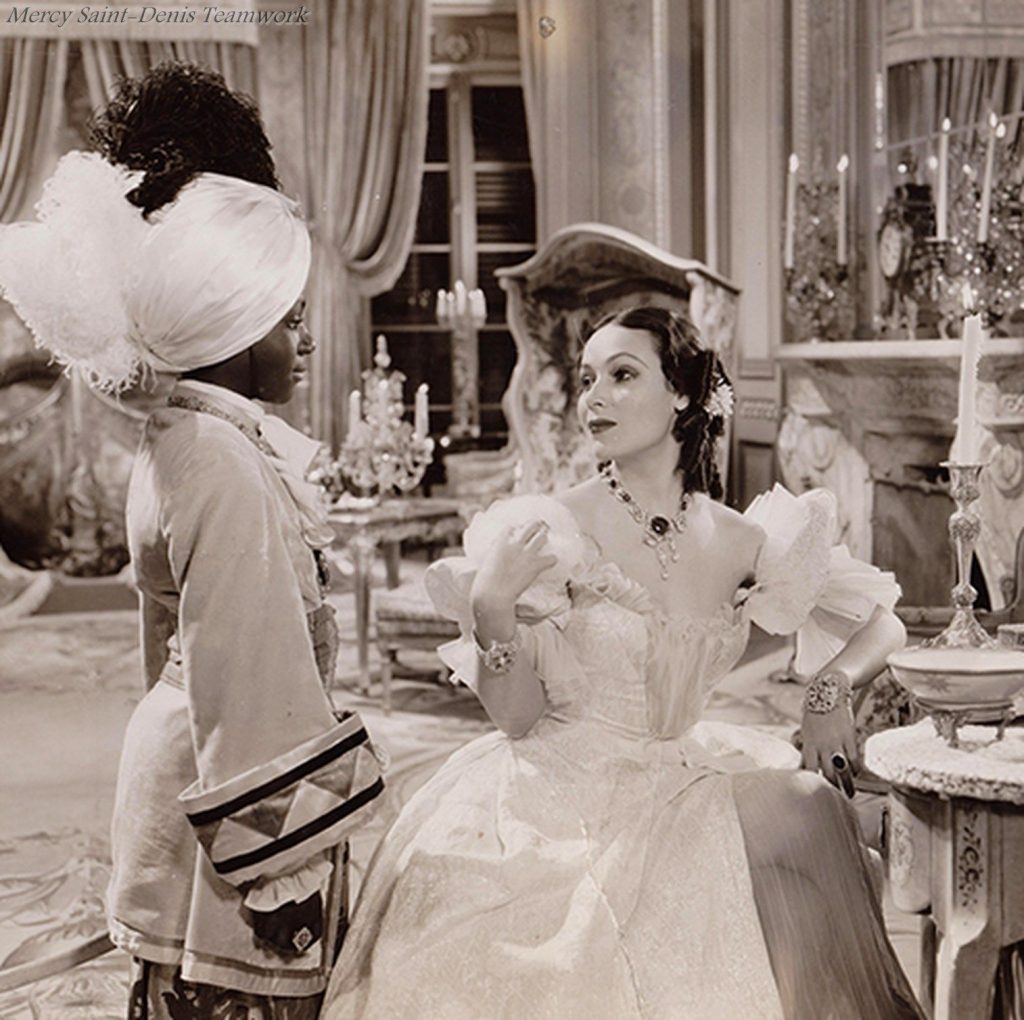
Madame Du Barry, d. William Dieterle, Warner Brothers Pictures (1934)
The Countess du Barry makes much of how well she treated her page. She had him christened at an elaborate ceremony as Louis Benoit Zamor, attended by the King himself. In some accounts Louis XV even consented to be the boys’ godfather. Zamor was given the not incredibly taxing but fairly demeaning position of cupbearer to the Countess’s dog Dorine, who drank coffee from a golden saucer and dined on cakes prepared by professional patisserie chefs. For the Countess’s amusement the King bestowed upon Zamor the title of Governer of Pavillon de Lucienne, with the attendant income and papers complete witn royal seal presented to him by the Chancellor. However, his purpose primarily seems to have been that of jester – the young Louis Benoit spent most of his time entertaining his Mistress with what she referred to as his ‘monkey tricks’. For the amusement of the Countess’s guests, he would juggle, dance and roll on the carpet at her command. Other amusements included making him pronounce difficult words and laughing at his accent, making him dance in his little grass skirt for treats, or threatening to flog him just to watch his terrified reaction, before relenting and ‘forgiving him’. As a boy, he would be dressed as cupid, and carry a a parasol over her and the King XV as they sat in the garden. In her memoirs, her little ‘imp of Africa’s’ tricks are usually mentioned alongside her dog Dorine, between whom, she says with amusement, a mutual dislike existed. Elsewhere, Zamor is condescendingly referred to as a ‘two legged pug’, ‘a human chimera’ and even a ‘sapajou’, a kind of capuchin monkey.
As far as the Countess was concerned, Zamor had the very best of upbringings. “I have never ceased to lavish kindness on him, and to be, in every sense of the word, a good mistress to him”. According to Zamor’s testimony his upbringing to a revolutionary tribunal years later it was anything but – he was nothing more than a pet, a plaything, and had to endure the constant scorn and derision of her household staff, who treated him like an animal.
Perhaps it was this that made Zamor pursue a self-education with vigour. Zamor became an avid reader of Rosseau. Like many enlightenment thinkers whose views were sweeping Europe, Rosseau challenged the divine nature of kingship and believed in equality before the law. What differentiated Rosseau from most enlightenment philosophers was his diagnosis of the reasons behind inequality. Rosseau thought that it would not be enough, as his contemporaries did, to abolish feudalism and the end the arbirtrary rule of princes and popes. As long as differences in wealth existed, there would never be true equality. “The first person who, having enclosed a plot of land, took it into his head to say this is mine and found people simple enough to believe him, was the true founder of civil society.“
Unlike Hobbes or Voltaire, Rosseau did not believe that men was innately cruel, but rather that it was a society based on property which had made man brutal. Not only would this make him one of the earliest materialist political philosophers, it also made him prone to idolise cultures he thought untainted by the concept of ‘civil’ society, like the ‘savages’ of America. Though Rosseau is now rightly criticised for being an early adopter of the ‘noble savage’ stereotype, in a time when European superiority over non-white cultures was assumed even by enlightenment thinkers, this would have been refreshing point of view to the young Zamor. It would also have made him more and more disgusted with the ostentatious displays of wealth in his mistress’s household, that were not only normal but expected of the aristocracy.
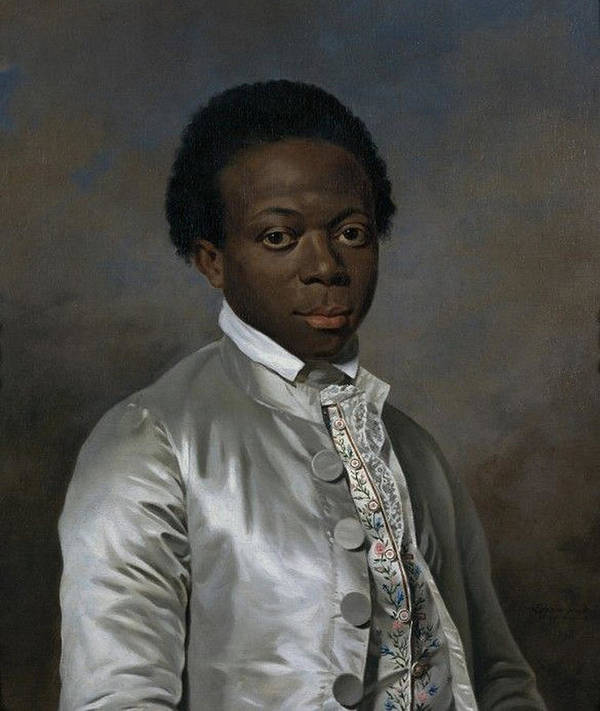
With the death of her lover Louis XV, the Countess now found herself out of favour and banished to the country side in her estates in Louveciennes. While the Countess’s star fell, the now twenty year old Zamor would have looked at the uncertainty that loomed on the horizon as a vast ocean of possibility.
II
It was in the reign of Louis XVI, of course, that the creaking feudal apparatus of the ancien regime finally came crashing down. By 1788 France was bankrupt and suffering from famine, leading to almost daily protests against the government. In July 1789, the streets of Paris rose up and captured the Parisian fortress of Bastille and the minds of entire generation. Louis XVI had no choice but to agree to recognise the newly constituted ‘National Assembly’ as the supreme authority of France and reduce himself overnight to a figurehead.
This first stage of the revolution was dominated by moderate liberals who had no intention of doing away with traditional heirarchies. The monarchy would be reformed as it had in England, replaced by a modern constitutional monarchy where the king remained the ‘father of the nation’ but a legislative assembly exercised all the power. There would be democracy, but in the oligarchic mould of the ‘democracies’ of England and the United States, where only rich, white, land owning men would have the right to vote and be elected to the National Assembly. The economy would be liberalised, freed from the royal hand and delivered to the the invisible hand of the free market. The church would be reformed but France would remain Catholic
Increasingly more radical views emerged, advocating ridiculous demands– voting rights for all men , a secular state, abolishment of all noble land and titles, redistribution of aristocrat wealth, and, increasingly, the abolishment of the monarchy and the execution of the King. These eventually coalesced around the Jacobin club, which began life as a pretty average political association of liberal thinkers, but which became smaller and more radical by their active involvement with the street associations of thse urban workers, artisans and fishwives that had actually conquered the Bastille while the gentlemen of the National Assembly gave grand speeches about liberty in Versailles. In our politically conservative times, the Jacobins are only remembered for being in power in those two years called by modern liberals and conservatives alike as the Great Terror. My views on the Jacobins and the extent to which they can be held responsible for the bloody internecine struggles in year II and III of the revolutionary era is beyond the scope of this piece. I only mention them beause it was was this side that Zamor joined after the Revolution.
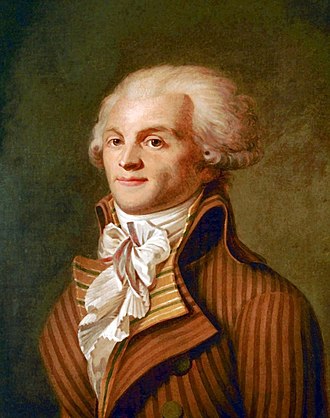
was a partisan of Robespierre, and was reported to have several
pictures of him on his wall
Robespierre c. 1790 (anonymous), Musée Carnavalet, Paris
The affiliation of Zamor, and other prominent revolutionaries of colour such as Dumas and the Chevalier de Saint-Georges, to the infamous Jacobin club can perhaps be explained by one story. In the first year of the Revolution, the National Assembly received a surprising delegation from the French colony of Saint Domingue (now Haiti). It comprised of two wealthy men of colour from the said slave colony who happened to be in Paris at the time- Vincent Oge and Julien Raimond. They approached the new National Assembly and asked the simple question – with all this talk of liberte, egalite, fraternite – would the Assembly then pronounce that freed people of colour had the same rights as white men in the colonies, including the right to vote? Though their demands didn’t quite extend to abolishing slavery, it caused a ripple through the National Assembly. The men of commerce and trade who had replaced princes and kings in this new France of course had no intention of disrupting Saint Domingues very profitable sugar trade, which ran entirely on slave labour. The majority in the National Assembly clearly never intended for the Rights of Man to apply to people of colour, and certainly hadn’t contemplated giving France’s colonial subjects the right to vote. Oge returned to Saint Domingue disappointed, but would go on for his part to contribute to what would become the Haitian Revolution.
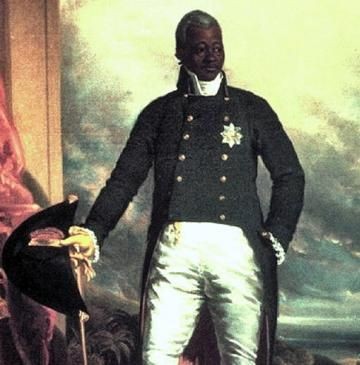
In revolutionary France however, the question of slavery however began to split the National Assembly in some increasingly fractious debates, culminating in a ten day showdown in May 1791 with delegates from the colonial administration of Saint Domingue, this time representing slave owners. The majority sided with the slave-owners, represented by a wealthy plantation owner called Moreau-de Saint Maury, who assured the National Assembly in no uncertain terms that should they even begin to contemplate extending the Rights of Man to the colonies, the colonies would secede from France. This spooked the head of the Assembly, Barnave. who urged caution to the National Assembly ‘by pronouncing on the status of coloured peoples, you run the risk of losing the colonies’
This caused one then unknown delegate called Maximillien Robespierre – the very same who would became the face of the Jacobin party in the years of ‘the Terror’ – to get up and say “The moment you pronounce, in one of your decrees, the word slave, you will be pronouncing your own dishonour and the overthrow of your constitution…Faugh! Perish your colonies, if you are keeping them at that price. Yes, if you either to lose your colonies or lose your happiness, glory, liberty, I would repeat; perish your colonies”
The slave-owners would win the day and Robespierre would lose. It would be a year before the Jacobin uprising led by Danton and Robespierre would establish the Insurrectionary Commune in 1792. One of the Commune’s achievements would be to proclaim a law abolishing slavery throughout the colonies. These years also saw black revolutionaries like Dumas, Saint-Georges and Raimond volunteer for service in the revolutionary army, with Dumas eventually becoming the first black general of France. After the conservative-moderate counter-revolution in July 1794 against the Jacobins, these people of colour would disappear from the revolution. After this would begin the rise of the French Empire and of Napoleon, one of whose first acts would be to repeal the decree and reintroduce slavery.
III
It was during the Jacobin ‘takeover’ in 1792 to 1794 that Zamor’s revolutionary career blossomed. Zamor came to the attention of Jean-Paul Marat, the infamous journalist and champion of the Parisian working class, whose fiery rhetoric against the aristocracy and the moderates often sees him (arguably unfairly) held responsible for the worst excesses of the Parisian mobs. After the Insurrection saw the rise of his allies Robespierre and Danton, Marat was appointed to head the dreaded Comité de Surveillance Révolutionnaire, the surveillance committee set up by to report on counter-revolutionary activities. Zamor became a willing informant for the revolutionary surveillance committee during this time, delivering reports on the activities of the Countess du Barry, in whose household he continued to be employed. Not only did the revolution give young Zamor purpose, but comradeship as well – it was reported during this time he became very close to the “revolutionary patriots named Blache, Salenave, Fremont and many others..”
Zamor compiled reports on the Countess for the committee documenting her numerous trips to England, with whom France was at war, and her role assisting in the flight of aristocrat emigres from France. Zamor would later claim that he had tried, after one of these trips, to persuade his Mistress not to aid the enemies of the Revolution. The Countess, finally figuring out that Zamor had been collaborating with the Paris Commune, dismissed him from her service, giving him three days to vacate her house. Zamor left immediately. She would see him again when she returned from one of her trips to England, in her own living room in the company of George Grieve of the Committee of Public Safety, with a warrant ordering her immediate arrest and the confiscation of her estates and her wealth.
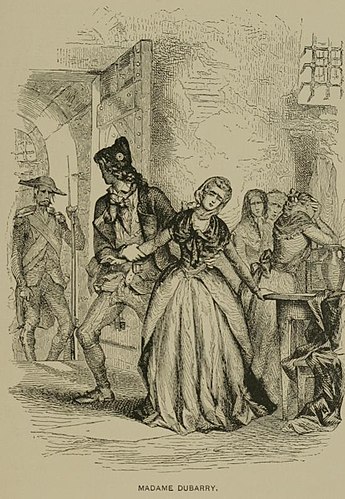
Zamor’s testimony brought DuBarry before a revolutionary tribunal in December 1793. Zamor also gave evidence at her hearing, looking his former Mistress in the eye as he gave evidence which would lead to her conviction.
On 7th December 1793 Du Barry was sentenced to death. The next day the Countess was taken in a tumbril to the guillotine in the Place de La Revolution. Her ascent up the guillotine was not pretty- she screamed and snarled, more like a trapped animal than a human being‘, before her last words to the executioner ‘please do not hurt me’.
It was Zamor who signed the death warrant of his former mistress. Zamor used this opportunity to finally reclaim his identity, placidly signing his testimony as “Louis-Benoit Zamor, né au Bengale, dans l’Inde…[Louis-Benoit Zamor, born in Bengal, in India…], finally putting an end to the questions about his background,.
In popular retellings of this time, it is to aristocrats like Du Barry to whom our sympathy is directed – after all, aristocrats and princes are the protagonists of most history. But it is precisely in this time, when people such as the Dubarry’s are treated ‘inhumanely’ that invisible people like Zamor, who in times of peace was treated as subhuman, suddenly became human, a testament to the emancipatory potential of revolutions. For the word of a former slave to be taken over the word of an aristocrat – this was truly a world turned upside down. Zamor found gainful employment after this with the Revolution, serving as secretary to the Revolutionary Surveillance Committee, a full office-holder in the Committee of Public Safety.
Of course, his story, like many in those tumultous years, had a bleak end. The Jacobin party always had less control over events even during their brief ‘rule’ than popular imagination has attirbuted to them. As a partisan of Robespierre, Zamor was arrested by a faction of Robespierre’s enemies, known as the Girondins. The reports say that all he had in his bedroom was hung portraits of Marat and Robespierre and a shelf of books by Rosseau. His friends in the Revolution secured his release months later, but Zamor decided to flee France and the orgy of bloodletting which erupted between Robespierre and the Girondins. After that Zamor fades once again into obscurity. The next mention we have of him is only decades later, on the occasion of his lonely death in Paris in 1820 after some time spent as a schoolteacher. He was buried as an ’emancipated slave’ from India.

Co-production France-Italy;
Filmsonor, Francinex, Les Films Ariane
Today, when the revolution’s memory is met with derision or presented as a cautionary tale,, and names like Robespierre and Marat uttered with revulsion by any respectable historian, so has Zamor’s remarkable story been forgotten or actively minimised. In fact, there has been much recent fascination with DuBarry – a French national dish is named after her, there have been no less than ten Hollywood films featuring the character, not to mention novels, plays, academic articles, biographies and even a Japanese ‘manga’ comic book – and once again Zamor has been reduced to an irrelevance, a well-treated but faithless servant, even by modern historians. He is once again remembered only as DuBarry’s nameless plaything, bound to her in eternal servitude while she enjoys second life in film and theatre. For a brief moment however, Zamor, went from a nameless slave to a revolutionary living in the full light of history.
